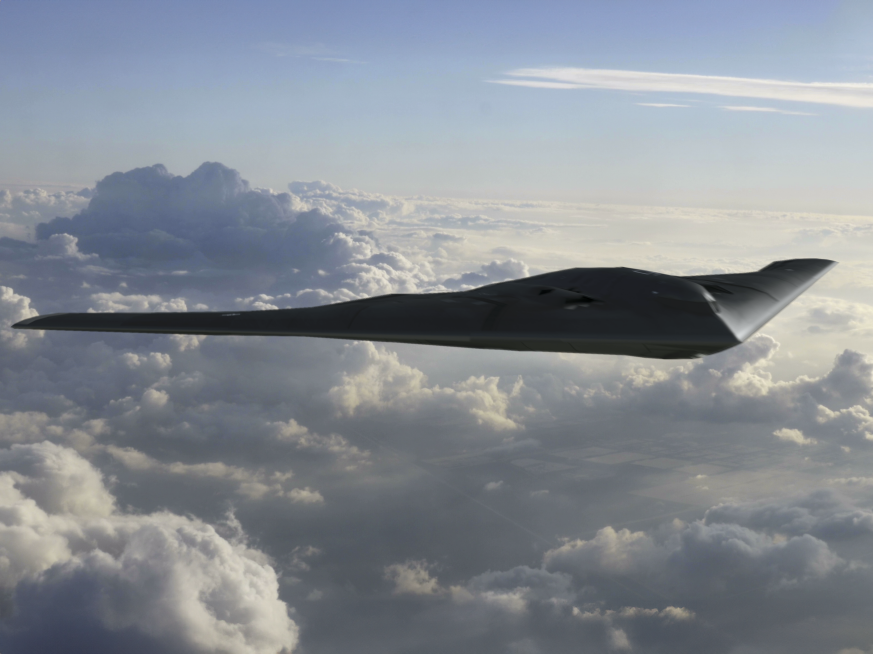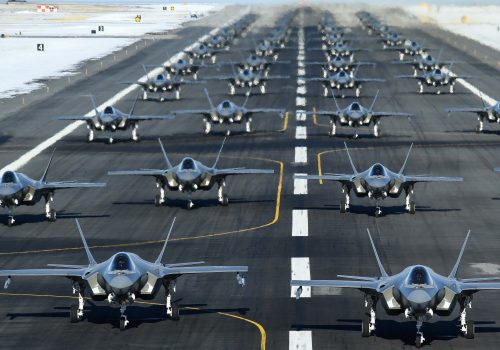Air superiority in Ukraine: Be sensitive to Diagoras’s problem
In his bestseller, The Black Swan, The Impact of the Highly Improbable, Nasim Nicholas Taleb tells the story of Diagoras, “the Atheist” of Melos, a Greek lyric poet and sophist of the fifth century BC. When shown painted tablets of devotees who had prayed and survived a shipwreck, Diagoras went against the hasty conclusion that prayer had saved them. Instead, he wondered where the portraits were of those who had prayed but had died anyway.
As Western experts puzzle over the air war in Ukraine and its continued surprises, they should remain sensitive to Diagoras’s problem: what observers contemplate does not necessarily reflect what they do not see.
What did military planners see?
Although most observers expected the Russian aerospace forces (VKS) to quickly gain air superiority over Ukraine, the first weeks of the war offered a surprise: The VKS’s performance demonstrated significant limits on its capabilities and operations. As the British researcher Justin Bronk has argued, VKS has shown itself incapable of carrying out complex air operations, starting, first and foremost, with a failed suppression of enemy air-defense (SEAD) mission—a mission yet essential to gain and maintain air superiority.
Meanwhile, the Ukrainian Air Force (UAF) adopted an air-denial strategy, as Kelly Grieco and Maximilian K. Bremer explain, thanks to the preservation of a “fleet-in being” and harassment tactics. The Ukrainians have relied on well-integrated and highly mobile ground-to-air systems, which have imposed most of the attrition on the VKS. In addition, they developed a flexible and resilient basing strategy to mitigate the effects of Russian strikes. Put differently, the Ukrainians applied mutatis mutandis, the tenets of the American concept of Agile Combat Employment by randomly selecting several airfields of deployment to complicate targeting. Finally, the Ukrainians excelled in the use of drones, embodied mainly (but not exclusively) by the Turkish-made TB2. Ultimately, the UAF has succeeded in preserving a potential force and has stood ready to use it at selected moments to locally deny freedom of maneuver to the VKS through harassment and attrition.
In short, Russia started with substantial numerical and technological advantages in the air domain, but it has since lacked the ability to use those advantages as part of a coherent strategy, adapted to counter Ukraine air-denial strategy and tactics. Yet it would be wrong to conclude that the Ukrainians took the upper hand in the air domain: notwithstanding the attrition suffered, the VKS continues to act from the air wherever they seek to do so, be it on the front line or deep in Ukrainian territory. The Russians have also learned “under fire” and may emerge from this conflict as a more seasoned force, provided they can recover from their war effort.
What did observers not see (or unconsciously ignore)?
Aside from the mythical “ghost-of-Kiev” propaganda, military planners did not contemplate Beyond Visual Range air-to-air missions to sweep the “blue sky,” which is—by the Western standard—one of the prerequisites for any large-scale joint operation in a contested environment, along with SEAD missions. Cognizant of its inferiority, the UAF has indeed rarely sought a direct air-to-air confrontation with the VKS, instead using air-guerrilla tactics.
Yet, it would be a fallacy to conclude that, under the pretext that such combat has not occurred in the “blue sky,” air superiority will only be challenged tomorrow through the means and tactics observed in Ukraine. Diagoras would warn against confirmation and interpretation biases. Indeed, the absence of air-to-air combat missions in Ukraine does not necessarily reflect the challenges of future conflicts between symmetrical powers enjoying air-to-air capabilities and willing to use them. China and Russia both field modern aircraft featuring powerful sensors, datalinks, or electronic warfare systems, and these aircraft are capable of carrying heavy ordinance—very long-range air-to-air missiles. Notably, China has increased its air-to-air capabilities by developing and fielding a BVR missile (namely the PL-15), which allegedly outranges the US-made AIM-120C/D AMRAAM series. Therefore, the level of threat “in the blue sky” posed by these countries is unlikely to disappear. Russia and China will not necessarily play by Ukrainian standards, even if they can learn from them.
What are the initial lessons learned from the air war in Ukraine?
Keeping in mind the need to remain cognizant of Diagoras’s problem, five preliminary lessons can be drawn from the war in Ukraine:
- Air superiority can only be local and temporary in a high-intensity conflict, and it will be more costly to achieve. Undoubtedly, the rise of denial strategies, which are now affordable even for regional powers, should be addressed. Those denial postures generally rely on two main dimensions: a defensive one, as epitomized by the various ranges of surface-to-air systems; and an offensive one embodied in the drone, rocket, artillery, and missile threats. These threats place infrastructures essential to the projection of air power constantly at risk. That said, the challenge will persist in the “blue sky,” and Western air forces need to be prepared for it.
- To address these vulnerabilities, the Western air forces model must regain quantitative depth. Facing the risk of attrition, the number of “ready-for-combat” aircraft and crews will be decisive. Notably, the war in Ukraine cruelly reminds observers that ammunition consumption is very high in a conflict of this type. However, modern weapons are very expensive, and industries are not organized to keep up with such a high consumption rate to replenish forces. Even the United States faces this issue, as Major General Jason Armagost acknowledged recently, warning, “We don’t want to build an exquisite force that lasts 10 days in combat.”
- Loitering munitions and tactical drones have become instrumental in modern conflicts, paving the way for new tactics. However, the real success of the TB2 should not be overestimated. These tactical drones remain vulnerable to the air- and ground-to-air threat, as shown by the thirty or so TB2s destroyed since the start of the war (they are now prevented from flying in the Donbas). In addition, the TB2 has tactical and technical limitations and cannot create the same military effects as a classical fighter (notably in terms of range and payload).
- All-domain integration is as much a key factor for operational superiority in a highly contested environment as it is challenging to implement in practice on the battlefield. The Russian failures in Ukraine demonstrate that there is “many a slip ‘twixt the cup and the lips” before achieving actual integration in all domains and that such an ambition remains hampered by complexity, interservice rivalry, or lack of interoperability by design among them. In their effort to achieve all-domain integration, Western allies need to learn these lessons and constantly challenge their expectations.
- Conducting a complex air maneuver requires maintaining a high level of training and proficiency for the forces. To date, Western air forces seem to have the upper hand, at least those that succeed in sustaining the right level of readiness, preparedness, and flying hours. They must not lower their guard and should even scale up to be prepared for a more demanding future. Training should also take into account real-world constraints, such as the number of munitions truly available and the “ready-for-combat” aircraft that can be effectively mobilized.
Conclusion
These initial lessons invite Western military planners to reflect on the need to adapt their air force structures, which must reconcile qualitative edge and quantitative depth. Cheaper, lighter, and less exquisite platforms will have to find their place in the force structure to support a new-generation fighter, which will remain essential to face the most demanding missions. The need to build up air and missile defense capabilities is also inescapable. Last, Justin Bronk writes, one “must learn from the failure of the Russian Air Force over Ukraine” and get serious about SEAD.
Ultimately, Western military leaders will need to challenge their initial assessment of the war in Ukraine, collectively and permanently, keeping the Diagoras problem in mind, so they do not prepare for the war they see today, but rather for the one they anticipate tomorrow.
***
David Pappalardo is a French officer currently serving as the air and space attaché in Washington, DC. He graduated from the French Air Force Academy and is a distinguished graduate of the US Air Command and Staff College.
Author’s note: This short essay is adapted from an article published in French at Le Rubicon. The views expressed are those of the author and do not necessarily reflect the official policy or position of the Ministère Des Armées, or the French Government.
Read more essays in the series

Forward Defense, housed within the Scowcroft Center for Strategy and Security, generates ideas and connects stakeholders in the defense ecosystem to promote an enduring military advantage for the United States, its allies, and partners. Our work identifies the defense strategies, capabilities, and resources the United States needs to deter and, if necessary, prevail in future conflict.
Image: An F-22 Raptor, Royal Air Force Typhoon FGR4 and French air force Rafale fly in formation as part of a trilateral exercise held at Joint Base Langley-Eustis, Va., Dec. 7, 2015. The exercise simulates a highly contested, degraded and operationally limited environment where U.S. and partner pilots and ground crews can test their readiness. (U.S. Air Force photo/Senior Airman Kayla Newman)
